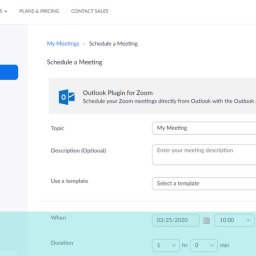
When it comes to user experience, it goes without saying that not all users are created equal. People come in all shapes and sizes, every level of intelligence, and here’s the vital part, with very different wants and needs.
Building a product that satisfies users’ needs demands that you know who your typical users are, how they operate, and what motivates them. User experience personas deliver the easiest way to digest and understand precisely that.
- User personas highlight what your users want and need and how they feel and act before, during, and after achieving their goals.
- They need to be easily understood by every department of your organisation.
Building a website, app, or software as a service is littered with pitfalls and places where the process can take a wrong turn, and understanding your users can be one of the biggest. Sadly, humans make far too many assumptions about our beliefs, values, education level, and experiences.
The beauty of developing each user persona for UX is that we build a product for someone we associate as a real person, triggering the empathy we need to make it an enjoyable and personal experience.
We need to keep three essential points in mind:
- Avoid user personas built around stereotypes and expectations
- Avoid bias
- The best user personas are built on research, data, and educated guesses
There’s a lot to unpack in developing the types of user persona UX design requires, whether for a product, project, new feature, or upgrade. So, let’s start with how you find out who your users really are.
Three levels of user persona
There are three typical methods of gathering data while creating personas for UX, each lending itself to budget and time constraints.
Proto personas
These are the quickest estimations of your ideal users; they’re based on existing knowledge and are the least costly and time-consuming.
Proto personas come from your teams’ and stakeholders’ best guesses and assumptions, usually by workshopping ideas and existing information.
Qualitative personas
Qualitative personas develop through interviews with a small to medium-sized sample group. They deliver actual data instead of assumptions and are still moderately low budget with reasonably quick delivery.
Statistical personas
These are the most comprehensive and thoroughly researched of your options but also the most time-consuming and costly. They combine qualitative interview research with quantitative survey data from a larger pool of research subjects.
Understanding user personas
User personas identify themes connecting your ideal users, including:
- Behaviour patterns
- Goals
- Skills
- Attitudes
- Problems and pain points
- Additional background information
We’ll discuss how to display that information using user persona templates further into the article, but for now, we want to explore how we define each user from the information we gather.
Being vigilant with demographics
While our user persona paints a picture of the person we’re building for or marketing to, demographic data helps fill gaps. However, with modern UX thinking, too much demographic data can take attention away from more valuable data, encouraging generalisations and assumptions.
There are instances when user demographics offer real value, especially with international UX design. Considering how different foreign users are to home users includes the cultural and language differences relevant to your products. So when it comes to global UX design, we’d expect to build a brand new range of UX user personas fit for purpose.
Each user persona for UX should be unique to the project
It’s imperative not to introduce data from alternative sources unless it’s relevant to the project.
User data should be based on your current product and user information, not on previous questionnaires, outdated reviews, stereotypes, and assumptions.
What should your UX research personas be used for?
- Making informed product decisions
- Understanding and empathising with ideal users
- Ensuring all teams and members are on the same page
It’s far simpler to judge what users need with a clear picture of who they are. Empathy helps us, as designers, to understand the simplest way to meet our ideal users’ needs in a way that will be easy for them to understand.
How to create UX personas
Choose your research subjects or study pool from relevant sources
Archetypes deliver precise pictures of types of people; stereotypes paint a far broader, general opinion. Therefore, we need our personas to be archetypes to satisfy their specific needs and pinpoint precisely who each product is for.
Design a questionnaire that delivers the results you need
Your questions should encourage your research subjects to provide open answers, explaining what they need and what’s stopping them from getting it.
It’s also imperative, for consistency, that each research subject is asked the same questions in the same manner. An in-depth questionnaire creates a very different set of results from a quick poll on social media, and mixing the two won’t portray the accuracy of each persona you need.
Segment your data employing the patterns that develop personas
Whether you use old-school spreadsheets or another more modern alternative, spotting patterns and specific keywords help you sort and segment your data, and from those, your personas will start to emerge.
They won’t consistently deliver the most apparent personas at first, but you can create sub-groups of your primary personas, should you need them.
Your data will also dictate how many personas you need. Ideally, we’d aim for between three and five; any more than that becomes confusing and too hard to remember. That’s where sub-groups and categories can play their part.
Using user personas for decision making
The questions you ask will lead your user persona mapping. A basic set of background questions that anyone can answer will help to segment each into their most obvious categories.
You’ll need all kinds of information about how they’re likely to interact and use your product, but you’ll also need information about who they are. For that, you’ll need to ask questions such as:
- What is their work title/job role?
- What devices do they use, and when?
- Are they responsible for purchases?
- Who are their favourite brands and social media follows?
- How do they speak and interact with you or their favourite brands? And how do they feel about your/their products?
It’s all about gathering information that you can categorise into types. This technique of persona mapping helps you define your ideal target audiences from real data.
How do these persona maps help decision-making?
You’re starting to build a picture of what your ideal customers look like, so how will you use that to make better design decisions?
- Deliver personalised UX – Now you know who your user is, you can build your product to suit them and not try to please every person on the planet.
- Combat churn – Keeping hold of subscribers is a must for ROI, so building anti-churn strategies into your product will help you retain subscribers for longer—and their monthly subscription.
- Create product-led growth – Avoiding churn is a must, yet there are plenty of other KPIs you can work on during the design and build. Using your data can uncover features that feed into positive retention, referral rates, and growth. It also boosts net promoter scores.
- You’ll see what should come next far easier – Knowing who your users are, you’ll understand what they’re looking for and the next steps into providing a better service. It also helps while building new features and their simple onboarding.
- Pinpoint product positioning– The data you use to map out each persona helps your marketing teams understand your buyers and your product’s position in the market. It can help them decide what features are prime selling points because of what each ideal customer profile needs.
Using persona templates
We suggest choosing a template only when you’ve compiled your data. Picking a template in advance can occasionally sway the information you ask for and how you frame your questionnaires. Your questions should be about goals, needs, and feelings, not how they will look on the page. Always build your templates around the results, not the other way around.
The best templates bring your personas to life, telling the story of who they are, what they want, and what they don’t. As well as providing background, it shows how they think and feel and how they’re most likely to behave.
Templates can present in various styles, but they’ll typically include:
- Name, age, occupation, status, and location
- A profile picture
- Behaviours and habits
- Motivations and frustrations
- Applications, sites, or software they use
However, templates aren’t a one-size-fits-all solution. We said it before; your data dictates your template layout, not the other way round. In addition, each user persona is an evolving entity, available for as many updates as your customer base requires as it shifts and changes over time.
Conclusion
There’s a lot to get your head around trying to understand how to build your UX research personas and use them correctly.
The rudimentary elements are to use actual research wherever possible; to build profiles with only essential details that paint a picture of a person with who you can identify and empathise.
We hope our introduction to the topic will provide a basic understanding for you to build on. However, if you’d like to know more about user personas, UX, or how our range of services can help improve your products, we’d be happy to discuss them and answer any questions you might have.
If you would like to know more about how to create UX user personas get in touch at hello@ux247.com.

















[…] Learn more: The importance of creating UX user personas […]